Updated: 09-Sep-2023
In 1928, Frank Whittle (see) was a Cranwell cadet and in his thesis on the possibility of jet propulsion he mentioned the use of the gas turbine, as indicated in his 1930 patent.
-The English Air Ministry did not take this project seriously.
-In 1935 he teamed up with Tinling and Williamson to create Power Jets Ltd.
-They were financed by the bankers Falk and Partners.
-The first engine had a double-sided compressor and a single combustion chamber. This was in the year 1937.
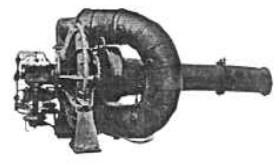
“WU of 1937”
-The construction of the first units was entrusted to British Thomson Houston (BTH). It was the WU or Whittle Unit.
-In this first WU difficulties were found, especially in the chamber.
-The collaboration of the Laidlaw, Drew and Co. company, expert in the design of burners and combustion chambers, helped Whittle and the new complete engine turned satisfactorily on April 12, 1938.

“Power Jets WU in 1938”
-It already had multiple chambers. All the WU variants continued until 1941.
-From the English texts the first unit is mentioned as WU only, but the prestigious Jane’s “All the World Aircraft” of the time relates as WU engines all that were made next, and that are derived from the one that was built in 1938.
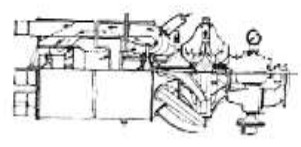
“WU in 1938”
For the WU engine (sometimes U) that appears in a diagram in the main text, we now have a photograph of a life-size model.

“Power Jets WU in 1938”
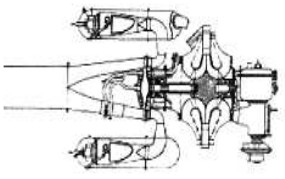
“WU in 1941”
-We see that at that time and due to the fact that the materials were not yet sufficiently resistant, the turbine was cooled by water.
-This was still done in the W1.
-In 1938, Power Jets already received an order to install an engine on an aircraft that Gloster was going to build, the E28/39.
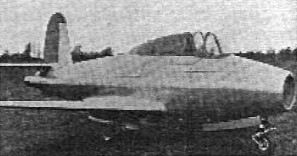
“Gloster E28/39”
-A first test engine was made for ground testing, which was the W1X. It was also built by BTH.
-This engine was considered "unairworthy" because the materials of its construction were simpler.
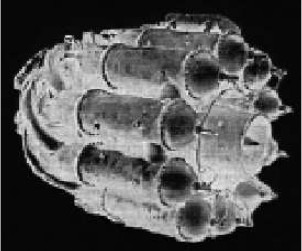
“Power Jets W1X” (PiP)
-One month later, on May 14 and in the afternoon of the following day, flights were made with the Gloster and the W1 engine. The first flight lasted 17 minutes.
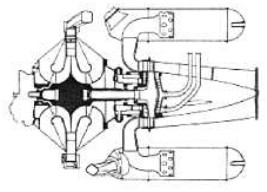
“W1, schematic drawing”
-16 or 17 more flights were made for a total of 10 hours. and 28 minutes, without incident and including the test bench times it was 39 hours and 57 minutes. The engine gave 855 lbf of thrust rotating at 17,750 rpm and weighing 623 lb.
After the W1, Power Jets made the W2, which was intended for the Gloster F9/40 twin-engine fighter, known in its production version as Meteor.
-After several inconveniences, the W2 Mk IV version was made, which varied slightly from the W2B. In 1942 the first W21/500 ran, giving 1755 lbf thrust at 16,570 rpm.
-As a curious fact, the nozzle temperature was 606° C and the consumption was 1.13 lb/hr/lbf of thrust. The W2B/500 with 1,850 lbf of thrust.
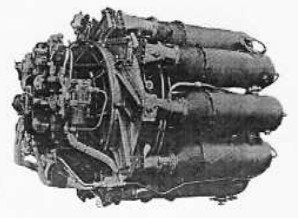
“Power Jets W2/700”
-The next engines were the W2/700 and W2/850. With respect to the W1, the power had tripled, with almost the same size and 50% more weight.
-Systems to increase the thrust were tested, such as the test carried out with Ammonia, adding a 6.15% weight while the thrust increased 28% in a W1 Mk III.
-The same test in the W2B adding 4.4% weight achieved an increase of 22.4% of thrust. "Methyl Chloride" was also tested.
-With water only, increases were appreciable: in the W2/700, 18% was achieved by injecting it at a rate of 102 lb per minute.
-There were tests with afterburners, but this was later by RR and on a Whittle-type engine, taking advantage of the excess unburned air that came out of the nozzle.
-It was the W2B/23 model reaching 27.5% more thrust in flight.
-In 1940 the English Air Ministry commissioned the Rover Car Company to manufacture the W2, leaving the Power Jets free for study and research.
-Rover started production of the W2B for the Meteor. They got 1,600 lbf of thrust at sea level, improving them with the W2/23.
-Due to the delays, manufacturing was transferred to Rolls-Royce, where it was known as RR “Welland” and was finally the main engine on the Meteor.
-On its own, Rover designed the W2B/26 prototype whose main characteristic was that the combustion chambers discharged onto the turbine instead of having the chambers inverted.
-Rolls-Royce used this prototype for its Derwent I engine that was destined to the Meteor III. It was the year 1943.
-The first Derwent gave 2,000 lbf while the Derwent V reached 3,500 lbf, which was the base for the Nene.
-The collaboration with the USA began in July 1941 when Air Marshal Linnell, USAF Colonel Lyan and Mr. Shoults of GE agreed that Power Jets would deliver the non-flying W1X and plans of the W2B, from which GE made the IA that flew on the P-59A.
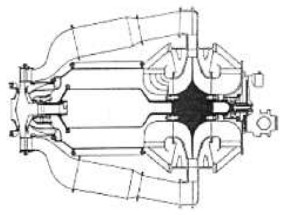
“Power Jets W2Y”
-The W2Y was in line with the above mentioned W2B/26.
-Turboprops were designed, including a turbofan (see Whittle and Frank Whittle).
-Power Jets was nationalized in 1944 passing to the Royal Aircraft Establishment and the knowledge distributed to DeHavilland, Armstrong-Siddeley, Metropolitan-Vickers and Rolls-Royce.
Engines of POWER JETS
Model: W1
Arquitecture:
Compressor/s:
Combustion chambers:
Turbines:
Power / Thrust: / ---
Weight:
Model: W1X
Arquitecture:
Compressor/s:
Combustion chambers:
Turbines:
Power / Thrust: / ---
Weight:
Model: W2
Arquitecture:
Compressor/s:
Combustion chambers:
Turbines:
Power / Thrust: / ---
Weight:
Model: W2.1/500
Arquitecture:
Compressor/s:
Combustion chambers:
Turbines:
Power / Thrust: / ---
Weight:
Model: W2.B/500
Arquitecture:
Compressor/s:
Combustion chambers:
Turbines:
Power / Thrust: / ---
Weight:
Model: W2/700
Arquitecture:
Compressor/s:
Combustion chambers:
Turbines:
Power / Thrust: / ---
Weight:
Model: W2/850
Arquitecture:
Compressor/s:
Combustion chambers:
Turbines:
Power / Thrust: / ---
Weight:
Model: W2B
Arquitecture:
Compressor/s:
Combustion chambers:
Turbines:
Power / Thrust: / ---
Weight:
Model: W2B/23
Arquitecture:
Compressor/s:
Combustion chambers:
Turbines:
Power / Thrust: / ---
Weight:
Model: W2B/26
Arquitecture:
Compressor/s:
Combustion chambers:
Turbines:
Power / Thrust: / ---
Weight:
Model: W2Y
Arquitecture:
Compressor/s:
Combustion chambers:
Turbines:
Power / Thrust: / ---
Weight:
Model: WU
Arquitecture:
Compressor/s:
Combustion chambers:
Turbines:
Power / Thrust: / ---
Weight:


